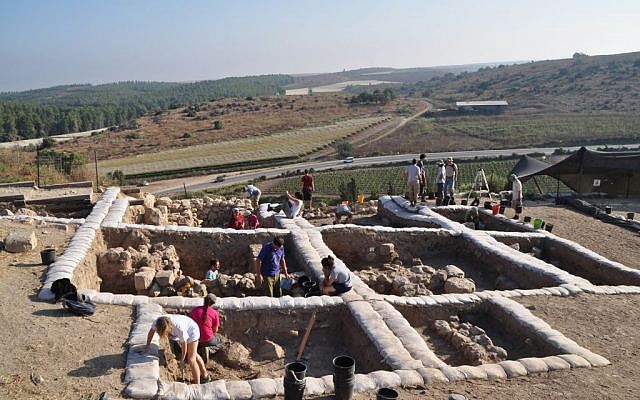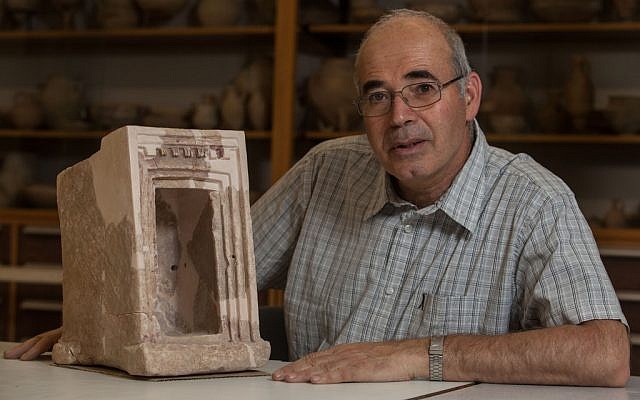
Archaeologists
at work excavating the biblical city of Lachish, where an early 12th
century BCE Canaanite alphabet inscription was found in 2014. (courtesy
of Yossi Garfinkel, Hebrew University)
Prof. Yosef Garfinkel, head of the Hebrew University of Jerusalem’s Institute of Archaeology, announced the find at a conference two weeks ago, according to the Haaretz newspaper on Tuesday.
The discovery, he argued, bolsters the biblical account in the book of Chronicles of the city under 10th century BCE King Rehoboam’s reign, which says: “And Rehoboam dwelt in Jerusalem, and built cities for defense in Judah: He built even Bethlehem, and Etam, and Tekoa, and Beth-zur, and Soco, and Adullam, and Gath, and Mareshah, and Ziph, and Adoraim, and Lachish, and Azekah, and Zorah, and Aijalon, and Hebron, which are in Judah and in Benjamin, fortified cities.”
“During the Late Bronze Age, Lachish was a very large, grand Canaanite city. Then in the 12th century B.C.E., it was destroyed, and stood waste for 200 or 250 years,” said Garfinkel. “The big question for research in the city is what happened in Layer 5 [of the early period] of the Iron Age: Is that a fortified city, or a village? If it was a city, when was it built? Some say, in the time of David and Solomon, in the early 10th century. Others think it was only built in the late 9th century.”

Yosef Garfinkel with a shrine model made of stone, found at Khirbet Qeiyafa (Courtesy of Hebrew University of Jerusalem)
“We looked in three places, and ultimately, in the northern section, we found a wall between Layer 6 and Layer 4. Later the excavators reached a floor that stretches to the wall, which could be dated using olive pits found beneath the floors. Samples of the pits were sent to the particle accelerator at Oxford, which ruled that the wall had been built around 920 B.C.E., which was exactly the rule of Rehoboam, son of Solomon and grandson of David.”
The discovery of a fortified city two days’ walk from King David and Solomon’s Jerusalem suggests the broader kingdom of Judah was established about a century earlier than historians currently believe.
But critics have rejected the discovery as proof of the biblical timeline, according to the paper.
Tel Aviv University’s Prof. Nadav Na’aman told Haaretz the thicker wall could have been built by Philistines or other rulers.
“In the 10th century B.C.E., Judah was still very peripheral, and very weak. It only began to gain strength in the 9th century B.C.E.,” he said.
Complete article
No comments:
Post a Comment